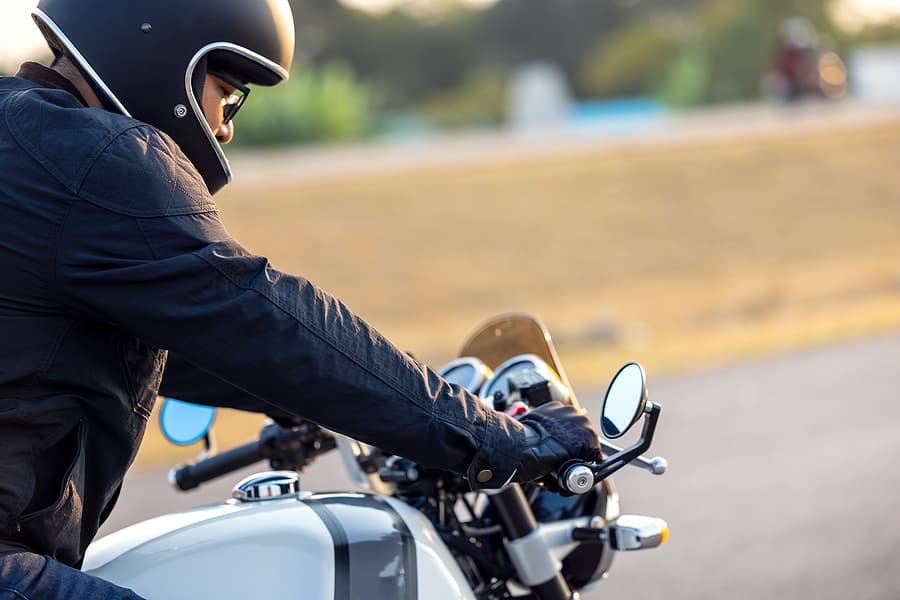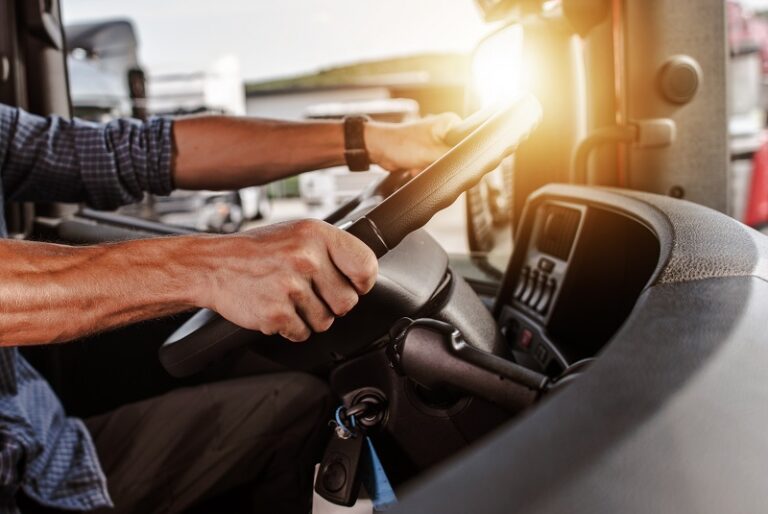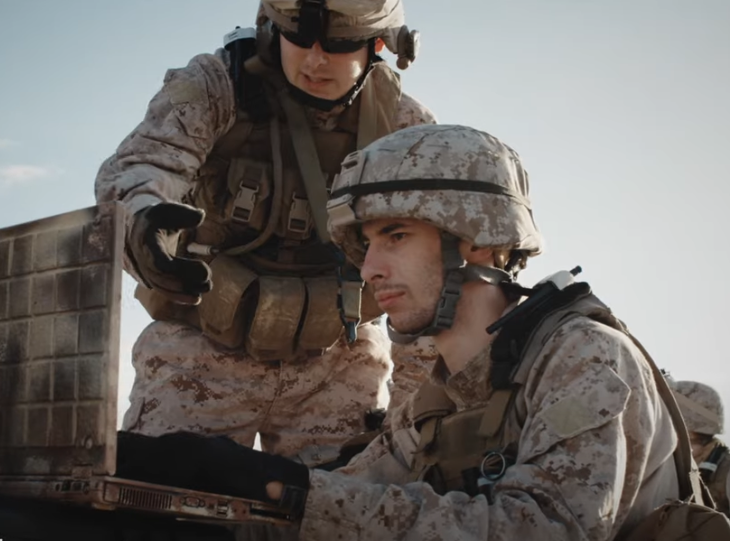
Motorcycle riders often can take chances that the average driver of a passenger vehicle cannot. They can slip into tighter spaces and more seamlessly navigate sharp turns and other challenges out on the road. Do they have the right of way out on the road? How do you know if a motorcycle rider has the right of way, and what should you do if you don’t?
Do motorcycles always have the right of way?
No, motorcycles do not always have the right of way. Motorcycle riders must follow the same rules of the road that other, larger passenger vehicles must use. Bikers cannot push their way into lanes or force their way into traffic.
While motorcycles may have to follow some specific laws and regulations, including several that pertain specifically to them, riders do not get to ignore any of the usual rules that govern traffic.
Other drivers may need to yield to motorcycles when they have the right of way under normal circumstances, but motorcycle riders should never assume that they have the right of way simply because of their smaller size.
When do motorcycles have the right of way?
Motorcycles have the same right of way as other vehicles on the road. Motorcycle riders have the same right to occupy and use space in traffic as any other driver.
For example, when merging into traffic, a motorcycle has the same right of way as any other vehicle: a passenger vehicle driver cannot pull out in front of a motorcycle.
Likewise, when stopped at a traffic light or stop sign, motorcycles have the right of way at the same time other drivers would: either when the traffic signal indicates that the motorcycle’s lane of traffic can proceed, or when the motorcycle rider’s turn comes around at a stop sign.
In some circumstances, passenger vehicle drivers may need to pay particular attention to motorcycle riders and the rules governing motorcycle right of way.
Motorcycles have the right to occupy a whole lane of traffic.
Motorcycles in California can legally split lanes: traveling between two lanes of traffic to save time, especially in heavy traffic. While motorcycles should lane-split only with caution, and generally only in cases of slow-moving traffic or traffic jams, motorcycle riders can legally take advantage of that option.
However, that does not mean that cars have the right to move over on top of a motorcycle. While motorcycles sometimes leave additional room in their lanes that cars could use, motorcycles have the right of way in their chosen lanes, and cars should not move over on top of them. California law states that a driver cannot legally interfere with a motorcycle rider or do something that could place the rider in harm’s way, including moving into a lane already occupied by a motorcycle.
If a motorcycle stops first in an intersection, the motorcycle has the right of way when it comes time to proceed through the intersection.
In intersections controlled by stop signs, motorcycles have the right of way when they would have the right of way in any other vehicle: generally, when the motorcycle arrives first at the intersection, or when it has the right to proceed next.
If more than one vehicle stops in an intersection at the same time, the vehicle on the right has the first right of way to proceed through the intersection. However, when a driver feels they may impede their safety or have questions about the right of way, letting the other driver go through the intersection first can help create safe traffic flow.
If a driver intends to turn left across traffic, and a motorcycle already occupies that traffic lane, the motorcycle has the right of way.
That means the other driver must wait until the motorcycle rider has passed before pulling across the lane. While cars can attempt to pull out before another vehicle reaches them, when a motorcycle comes toward them, they may want to consider the fact that it could prove more difficult to judge the motorcycle’s rate of speed.
In some cases, motorcycles may get up to speed faster than passenger vehicles. Their smaller size also makes it more difficult to determine how fast they need to move. As a result, drivers may want to go ahead and wait for a motorcycle to pass before making a left turn, even if the driver feels that they probably have enough room to make the turn.
How Do You Know Which Driver Has the Right of Way?
Determining who has the right of way can be difficult in some cases. You might know that the driver who stops first at a stop sign has the first right to proceed through that intersection, but what about in other cases?
In general, the driver who occupies the road first has the right of way. For example, if a driver already occupies a lane of traffic, and another driver wants to change lanes or merge into that lane, the driver already occupying that lane has the right of way. Likewise, if a driver wants to pull out of a parking space, the driver already in the lane has the right of way.
Exercising simple precautions, common sense, and courtesy on the road are great ways to prevent conflicts over the right of way and avoid potential collisions, including collisions with motorcycles.
Sharing the Road Safely with Motorcycles: Protecting Motorcycle Riders’ Right of Way and More
Motorcycles do not always have the right of way and motorcycle riders must follow the same rules that govern other drivers. Other drivers, however, can take several important steps to protect the safety of the motorcycle riders that share the road with them.
Motorcycle riders face much greater danger on the road than drivers and passengers in other vehicles. Passenger vehicles offer protection from the road and the risk of a collision with another vehicle. Motorcycle riders, on the other hand, have no such protection.
Furthermore, motorcycle riders may have more frequent accidents because other drivers may have a harder time seeing them. Drivers may have a hard time seeing motorcycles since they fit in the blind spots of many passenger vehicles. To keep motorcycle riders safer on the road, the drivers of passenger vehicles can do several things to reduce the overall risks those drivers face on the road.
1. Always look twice for motorcycles.
Take the time to look for motorcycles before changing lanes or pulling out into traffic. Taking a second look to make sure you have not overlooked anything is an easy and safe way to avoid an accident. Motorcycles can prove much more difficult to spot on the road, which means that a second look can make a big difference.
2. Look specifically for motorcycles, especially if you have noticed one moving around you.
Motorcycles fit a different visual profile than passenger vehicles. As such, they may prove more difficult to spot. When driving a passenger vehicle, you get used to looking for other passenger vehicles: the most common thing you have to look out for on the road.
Because they do not fit that profile, motorcycles may not trigger the part of your mind that reminds you that you have to wait for them to pass. You may overlook them without ever meaning to, simply because they fail to fit the right visual profile. As a result, you may have a much harder time determining the movements of a motorcycle around you.
Get in the habit of looking specifically for motorcycles. When you retrain your mind to look for that visual profile, you will find it much easier to spot motorcycles and avoid potential collisions with them. If you do notice that a motorcycle shares the road with you, get in the habit of looking specifically for that motorcycle, especially if you do not know where the driver went.
3. Give motorcycles the right of way whenever you have a question.
Some drivers feel antagonistic toward motorcycle riders, especially if they have seen aggressive riders engaging in dangerous maneuvers, including speeding through traffic or swerving across lanes. However, driving aggressively, in turn, can significantly increase the risk of a collision.
Do not try to force motorcycle riders to engage in specific behaviors. Furthermore, always yield to the motorcycle if you question who has the right of way, including uncertainty about which vehicle reached an intersection first or which driver already occupied a lane.
While it may feel frustrating at the moment, especially if you have observed the rider engaging in dangerous behavior, you may find that it significantly lowers accident risk. Getting in the habit of yielding to motorcycles when necessary can help keep riders safer since you will not have to worry about hitting them.
4. Do not attempt to encroach in a motorcycle’s lane.
Some drivers will attempt to use a motorcycle’s lane to get around an obstacle. If you have a little room in one lane, and half a lane in the other, you may have enough room to navigate around a slow-moving vehicle, for example. This practice, however, can prove extremely dangerous for motorcycle riders.
First, the motorcycle rider cannot know that you intend to simply split the lane or use a small portion of it, which means that the motorcycle rider may react on instinct, jerking the motorcycle out of the road and potentially causing an accident. Some bikers will overcorrect, which can cause them to lose control of the bike or even lay it over.
Second, you may underestimate the space that a motorcycle needs to maneuver. You may force the motorcycle off the road or unintentionally strike the rider.
Finally, if you encroach on a rider’s lane as a rider shifts further toward the side of the lane, you may end up causing a collision without meaning to. Even with turn signals, you may have difficulty indicating your intentions. What seemed like a timesaving maneuver could end in disaster.
Instead, offer motorcycle riders the same respect as any other driver. Allow them to occupy an entire lane of traffic, even though the motorcycle does not seem to need that much space.
5. Give riders adequate room to maneuver.
Motorcycles can often get up to speed faster, stop faster, and turn faster than larger passenger vehicles. If you tailgate a motorcycle, you may find it very difficult to stop in time if the rider suddenly needs to change lanes, make a fast turn, or stop. Unfortunately, many passenger vehicle drivers fail to correctly judge the speed of a motorcycle in front of them, and they may have an even harder time judging speed changes and stops.
Leave adequate room for motorcycles to maneuver. Instead of getting closer to a motorcycle, leave the rider more room than you would for a passenger vehicle. Remember that a collision can prove much more devastating for a biker, and make sure that you do not cause one by tailgating.
Contact a Lawyer Following a Motorcycle Accident
Despite the best efforts of many motorcycle riders, some drivers will not yield right of way, resulting in catastrophic accidents with severe injuries. If you have suffered injuries in a motorcycle accident, a motorcycle accident attorney can help you learn more about your right to compensation.
Contact a lawyer as soon after your motorcycle accident as possible to file a motorcycle accident claim and protect your rights.







